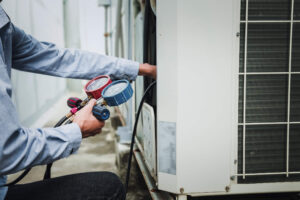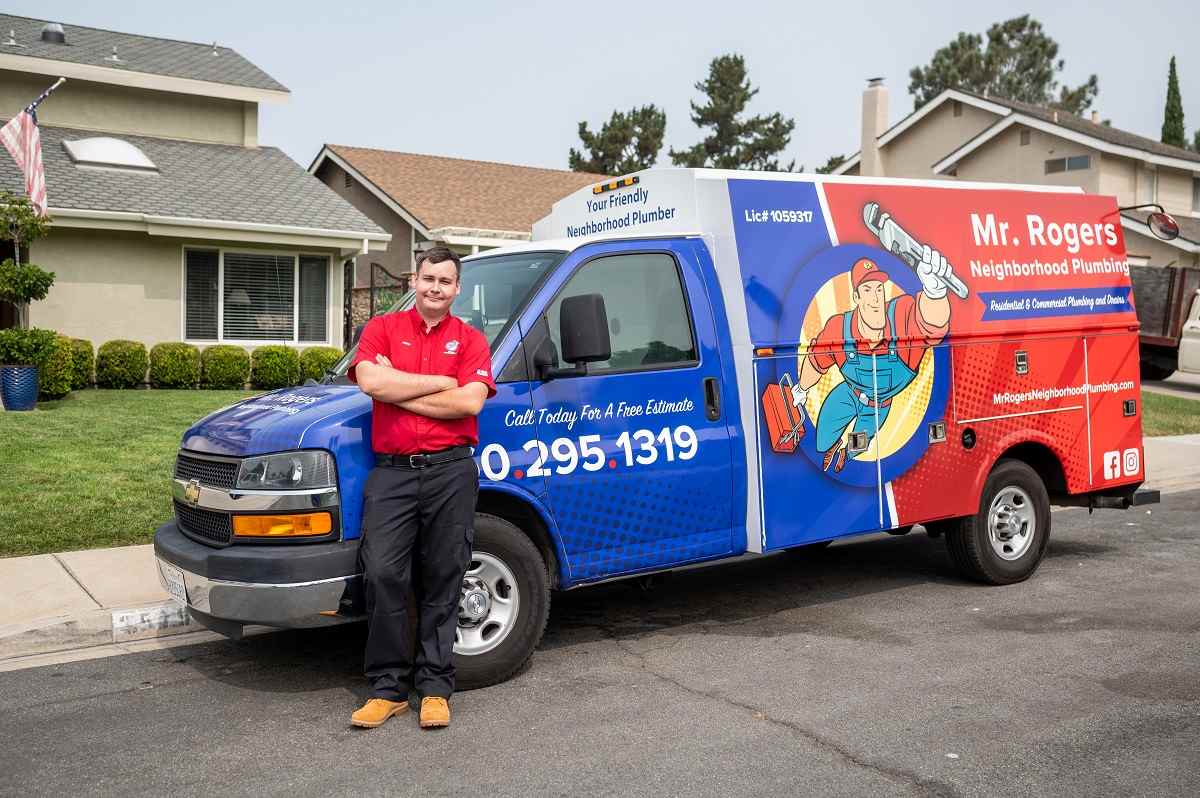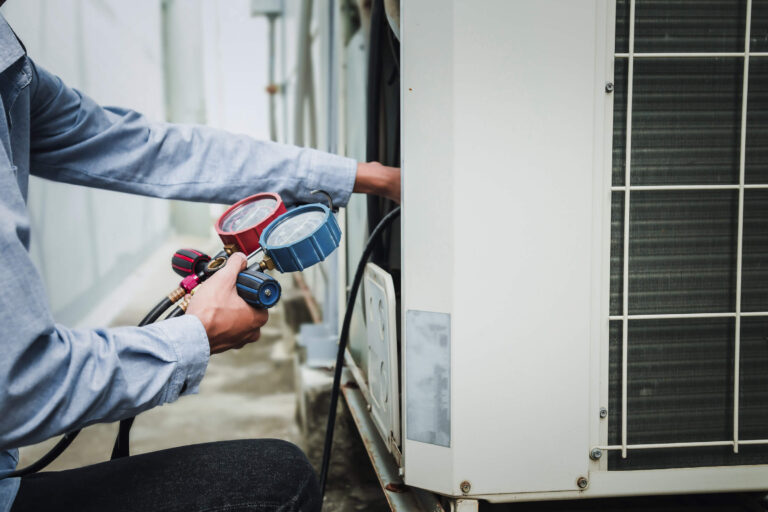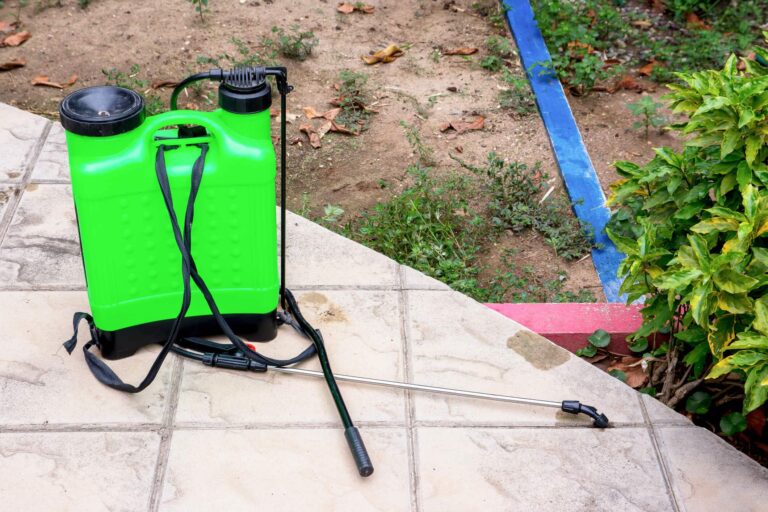Tankless Water Heaters
How Tankless Water Heaters Work: Tankless water heaters, often referred to as on-demand water heaters, heat water directly without the use of a storage tank. When a hot water tap is turned on, cold water travels through a pipe into the unit, where a gas burner or electric element heats the water. This means that water is heated as it’s needed, providing a continuous supply without taking up the space a tank would require.
Benefits of Choosing a Tankless Model: The primary advantage of a tankless water heater is its space-saving nature. Because these units do not have bulky tanks, they can be installed in smaller, unconventional spaces like closets or under cabinets.
Point-of-Use Water Heaters
Description of Point-of-Use Systems: Point-of-use water heaters are compact units designed to heat water at the specific location where it is used, such as under a kitchen or bathroom sink. These small electric units are perfect for areas where installing a larger water heater is impractical due to space limitations.
Ideal Situations for Their Use: These heaters are especially suited for small bathrooms or kitchens in apartments or small homes in Oceanside, where minimal water usage is anticipated. Point-of-use water heaters ensure that hot water is available almost instantly, which is convenient and also reduces water waste. They are an excellent solution for areas that are far from the main water heater because they eliminate the delay in hot water delivery.
Small Tanked Water Heaters
Overview of Smaller-Capacity Tanked Heaters: For those who prefer traditional tanked water heaters but face space constraints, small tanked water heaters are available. These units typically range from 2.5 to 20 gallons in capacity, making them much more compact than standard 40 to 50-gallon tanks. Despite their small size, they operate similarly to larger tanked models.
When and Where These Might Be Appropriate: Small tanked water heaters are ideal for single-use applications, such as in a garage or laundry room, where only limited hot water is needed. They can be tucked away under a sink or in a closet, making them practical for small living spaces in Oceanside.
Benefits of Installing Tankless Water Heaters in Small Spaces
Space Saving
One of the most significant advantages of tankless water heaters is their compact design. Unlike traditional tank models, which typically require a substantial amount of space for installation and operation, tankless water heaters are small and can be mounted on a wall. To quantify, traditional water heaters with tanks may take up to 16 square feet of floor space, whereas tankless models often use less than 3 square feet.
Energy Efficiency
Energy efficiency is another critical factor, especially in tight living spaces where every utility bill matters. Tankless water heaters are designed to be significantly more energy-efficient than their tanked counterparts. By heating water on demand, they eliminate the need to continuously heat and reheat water in a tank, which can lead to substantial energy savings. On average, households in Oceanside can expect to save up to 30% on their energy bills with a tankless system compared to traditional tank water heaters.
On-Demand Hot Water
The convenience of having on-demand hot water cannot be overstated, especially in smaller family units or single-person households common in Oceanside, CA. Tankless water heaters provide hot water precisely when it’s needed without the wait. There’s no running out of hot water during back-to-back showers or when running the dishwasher, as the water is heated instantaneously as it flows through the unit.
Installation Tips for Small Spaces
When installing water heaters in small spaces within Oceanside, CA, careful planning and professional help are paramount. The unique challenges of limited areas demand efficient use of space and adherence to safety standards, making the choice of a professional plumber crucial. Here’s how to maximize space and ensure safety and efficiency during the installation of water heaters in compact living quarters.
Maximizing Space during Installation
Choose the Right Model: Firstly, selecting the right water heater model that fits your space is essential. For small spaces, tankless water heaters or small-capacity tanked models are ideal. Tankless units are particularly beneficial as they can be mounted on the wall, freeing up floor space.
Strategic Placement: Placement is key to maximizing space. Consider unconventional spots that are often overlooked, such as high on walls or in compact corners. However, ensure that the unit remains accessible for maintenance. A skilled plumber from Oceanside will be able to advise on the best placement for both functionality and space optimization.
Use of Compact Fittings: Using the right fittings and fixtures can also help save space. Compact and multifunctional components designed for small installations can reduce the overall footprint of the water heater setup.
The Importance of Professional Installation
Ensuring Safety: Water heater installation involves complex considerations, such as electrical wiring and gas lines, making it a task that should only be handled by a certified plumber. In Oceanside, specific codes and regulations govern the installation of water heaters to ensure safety. A professional plumber will be familiar with these regulations and will ensure that the installation complies with all local and state codes.
Achieving Efficiency: Efficient operation of a water heater is not only about energy consumption but also about its installation quality. Incorrect installation can lead to energy wastage and increased utility bills. An experienced Oceanside plumber will ensure that the water heater is installed for optimum efficiency, providing maximum output with minimal energy consumption.
Longevity and Warranty: Professional installation by a certified plumber also impacts the warranty of the water heater. Many manufacturers require professional installation as a condition of their warranty. An expert plumber will ensure that the installation is performed correctly, thereby maintaining the unit’s warranty and ensuring its longevity.












